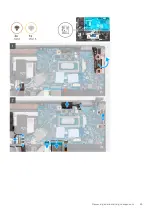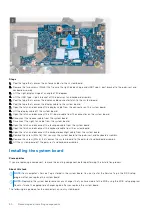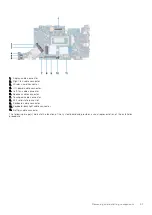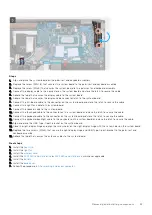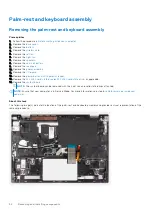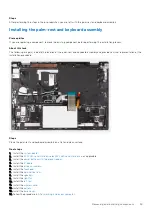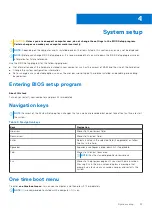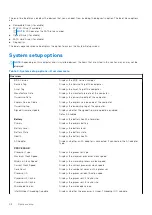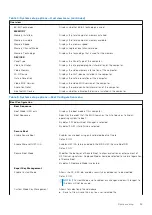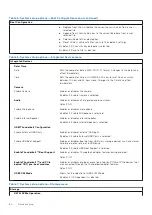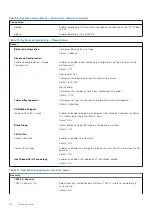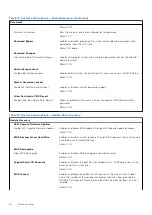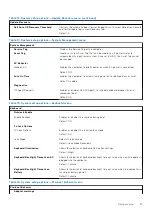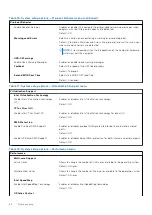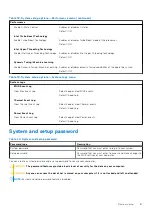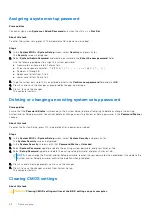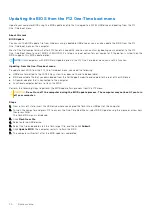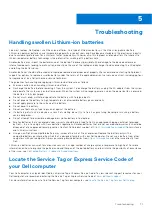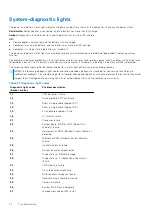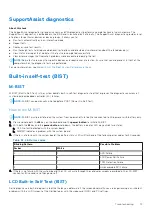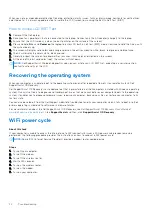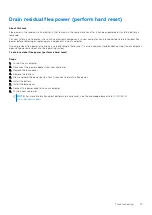
Table 11. System setup options—Security menu (continued)
Security
Attestation Enable
Select whether the TPM Endorsement Hierarchy is available to the operating
system.
Default: ON
Key Storage Enable
Select whether the TPM Storage Hierarchy is available to the operating
system.
Default: ON
SHA-256
Selects whether the SHA-256 hash algorithm will be used by BIOS and TPM.
Default: ON
Clear
Clears TPM owner information and returns TPM to the default state.
Default: OFF
PPI Bypass for Clear Commands
Controls whether the operating system can skip BIOS Physical Presence
Interface (PPI) prompts when the Clear command is issued.
Default: OFF
SMM Security Mitigation
Enables or displays additional UEFI SMM Security Mitigation protections.
Default: OFF
Data Wipe on Next Boot
Start Data Wipe
Enables the BIOS to queue up a data wipe cycle for storage devices during next
reboot.
Default: OFF
Absolute®
Enables, disables, or permanently disables the BIOS module interface of the
optional Absolute Persistence Module service from Absolute Software.
Default: Enable Absolute
UEFI Boot Path Security
Selects whether or not administrator password is required when booting to a
UEFI boot path device from the F12 boot menu.
Default: Always Except Internal HDD
Table 12. System setup options—Passwords menu
Passwords
Admin Password
Enables the user to set, change, or delete the administrator (admin) password.
The admin password enables several security features
System Password
Enables the user to set, change, or delete the system password.
M.2 PCIe SSD-0
Enables the user to set, change, or delete the password for the internal
storage.
Password Configuration
Upper Case Letter
Forces the password to have at least one uppercase letter.
Default: OFF
Lower Case Letter
Forces the password to have at least one lowercase letter.
Default: OFF
Digit
Forces the password to have at least one digit number.
Default: OFF
Special Character
Forces the password to have at least one special character.
System setup
63

